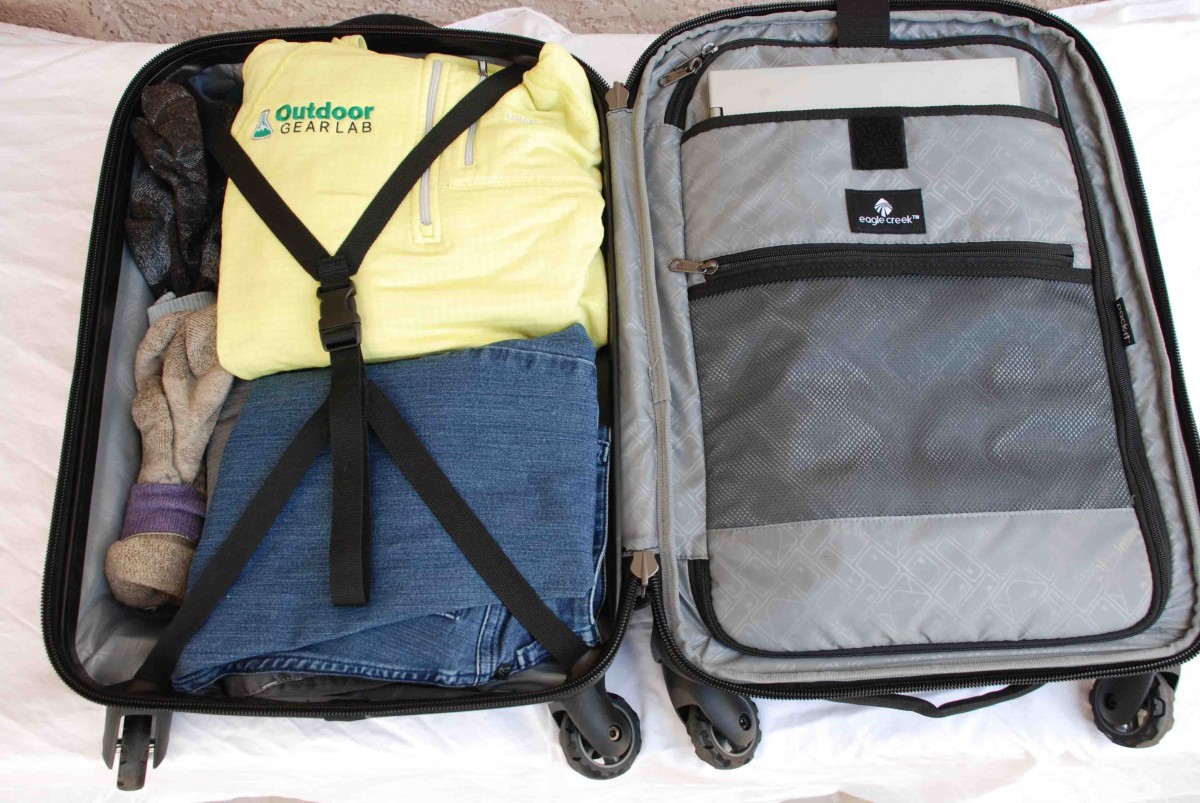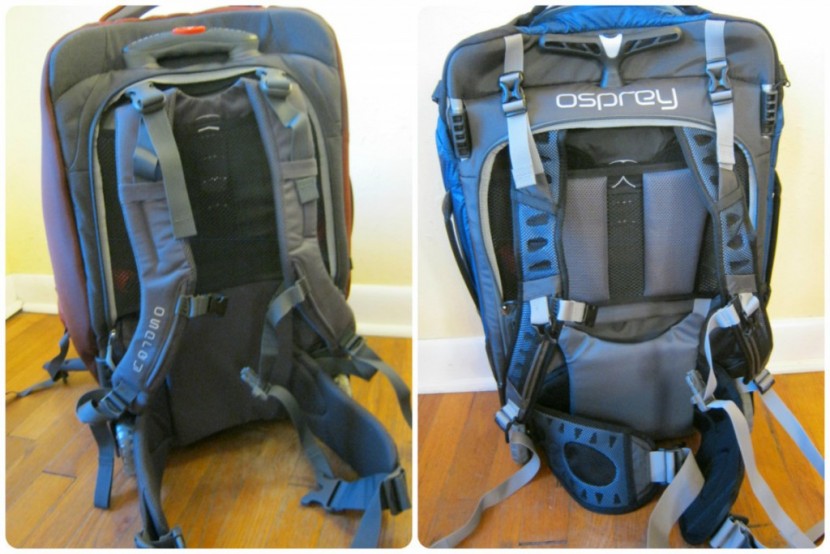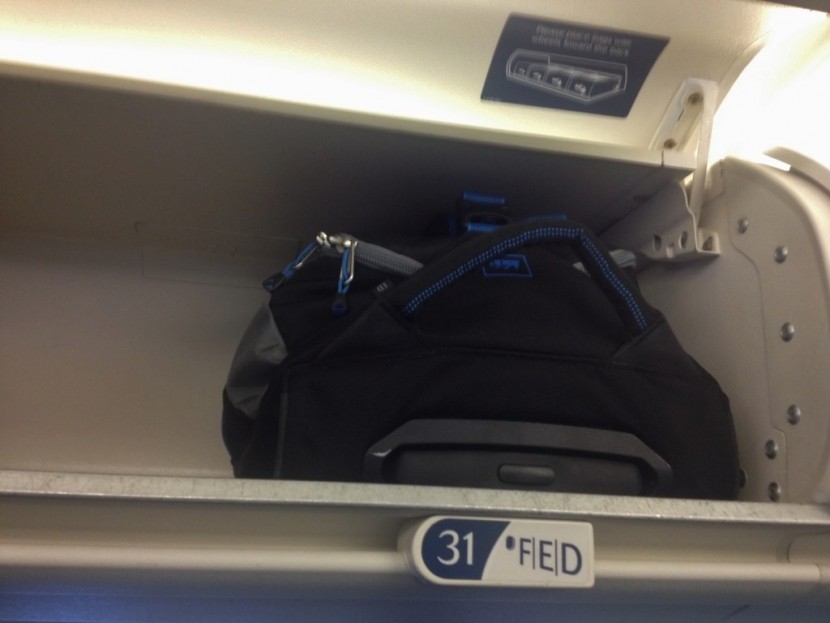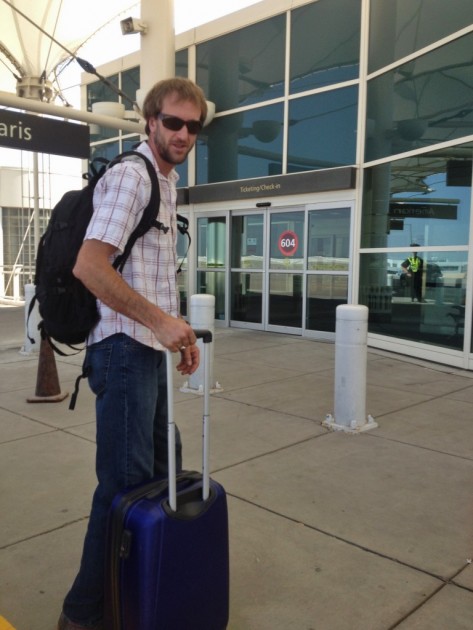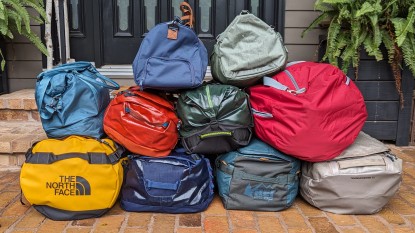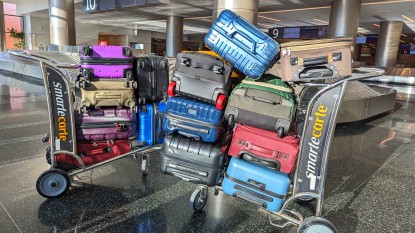Want to pack luggage like a pro? Whether you are packing a suitcase for a week-long adventure, a business trip, or a quick weekend getaway, packing a bag is not rocket science. But you can't just smash and shove all your clothing, gear and accessories into your bag. So here are tips to help pack your bags and arrive at your destination looking fresh and wrinkle-free.
There are a few things to always keep in mind. You want to maximize the space you have and the best way to do that is to actually utilize all of that space. Remember to tuck items into the corners and up against the edges of the bag. This is especially true with baggage you are going to carry on.
Step 1: Bring Only the Essentials
The one sure thing to make packing easier is to have less stuff to pack. This may sound obvious, but most people bring way more than they need. So have the fewest items possible in the smallest piece of luggage possible. Used to bringing a suitcase? Consider a carry-on. If you usually use a carry-on, consider a small daypack or travel backpack. Rarely do people complain because they travel too light. See our Travel Tips for more info and these tips on how to travel with less.
How to Pack a Suitcase and Travel Bags
Fold n' Roll
A great way to minimize wrinkles is the fold n' roll, which is best for t-shirts and pants. For t-shirts, start by carefully folding in half vertically, arms together, then fold the arms in, leaving a long rectangle. Starting from the bottom, roll the shirt up towards the top. With pants, fold the legs together lengthwise, then roll from the bottom to top (instead of top to bottom). This video shows how.
The Dress-Ups
For your dress-ups and business clothing, things get a little more tricky. The best way to keep those dress shirts and slacks looking fresh is to use plastic (like a dry cleaning bag) between each item. By layering your garments between sheets of dry cleaning bags or cut open plastic bags, you minimize the rubbing and chafing. Your dress-ups will arrive fresh and wrinkle-free. If you travel often, you can use large zip-lock bags; keep them in your suitcase and reuse them time and again.
Shoes and Socks
To avoid dirtying your clean laundry with the soles of the shoes, put shoes into the bottom of the suitcase first, soles down. If they are dirty or you are worried, use a layer of plastic bag to cover them. There's a lot of wasted space inside shoes. That's a great place to store socks or other small items.
Stuff Sacks and Ditty Bags for Everything
Even top-rated travel bags often don't have enough accessory pockets for odds and ends like toiletries, chargers, makeup, etc. A great way to deal with all those little items is to use a few small stuff sacks or portable pockets. We recommend the Outdoor Research Mesh Ditty Sacks, but any small pouch will work. Outdoor Research sells the ditty sacks in a three count for $25. These sacks will help you organize while packing and will help you stay organized once you arrive. Have at least two or three of these, one for toiletries, one for electronics, and one for everything in between.
Packing a Backpack
If you have ever packed for a big adventure that required backpacks rather than suitcases, you know things can get tricky. Here are a few tips for packing up, whether you are going backpacking around Europe, are preparing for a big mountain expedition, or just don't own a real suitcase. The fold n' roll is a great strategy with a backpack, too.
Let's assume that we are trying to pack up for an urban camping trip. You know, sleeping bag, clothing, maybe a computer or tablet, and some odds and ends.
Less Is More
It is easy to forget how much things weigh. Individually, many items like a sleeping bag, a coat, or even five or six pairs of socks don't weigh very much. But when you add all these items together, the weight really adds up. When you will be using a backpack instead of a suitcase, and plan to carry it with you fairly often, it is essential to remember that less is more. Unfortunately, when you are living out of a bag, you will have to make some sacrifices; you might not want to bring three jackets and five pairs of pants. Keep it simple and keep it minimal. Take your favorite t-shirt and wear it two or three days in a row, proudly! Try to keep a backpack between 25 and 35 pounds, more than that and it will be difficult and annoying to carry.
Useless to Useful
When living out of a backpack, nothing is more frustrating than digging in your pack to look for your raincoat because it just started to pour, and you buried it in the very bottom of your bag. Try to pack the things you don't need quick and easy access to (like your extra socks and underwear or your pajamas) on the bottom, then work towards the things you may need to get at quickly, like your sweater or your raincoat.
Protect the Breakables
If you have a computer or tablet, it is important to keep it protected. Pack up your bag, then slide a sweater or jacket against the back panel of the bag, now slide the computer down alongside this. By sandwiching the computer or tablet between the jacket and your other clothing, it will stay protected. Never slide the computer straight against the back panel of the backpack. The rigid frame of the pack can damage the device if it gets smashed.
What about camping and REAL backpacking?
If you are packing up for a proper backpacking trip with all the odds and ends like a stove, cook set, tent, sleeping bag, and everything else needed for the wilderness, it is important to think soft, then hard. A sleeping bag or extra clothing is a great thing to put in the very bottom of the bag. This is especially true if you have irregular shaped items that can jut out and poke into the bottom of the bag, increasing the chances of tearing the fabric. Place something soft in the bottom first, then put the heavy items in. This also helps to distribute the weight better by placing the heavy part of the bag in line with the torso and improving the carrying comfort.
After you have placed the heavier items in the middle, put the 'high priority' items on top. This is where you want the items that you will likely need access to: raincoat, jacket, food and snacks, and the water pump.
Not sure what food to pack for your upcoming backpacking trip? Read The Best Backpacking Food article to find out!
Stuff Sacks and Ditty Bags
Even the most tricked-out backpacks don't ever seem to have enough pockets for all the little odds and ends that have to come along on a trip. Things like chapstick, extra batteries, your headlamp, snacks, maps, sunscreen, spoon, fork and knife can get lost forever inside a fully packed backpack. Use small, lightweight ditty bags to keep track of all these little items. You can even keep a few small bags in the top so that it is easy to get what you want.
Backpacks are for putting things INSIDE, not clipping things to
Backpacks are NOT for clipping items to the outside so they jingle-jangle while you walk. Nothing is more annoying than having a yard sale of items hanging from the outside of your bag, swinging back and forth, making your bag sway and constantly clinking together while you walk. Find a way to get these items inside the bag. Put your water bottle into the side pouch of the bag, or into the top if need be.
Very often, new backpackers don't follow these rules, but still get through their trip and still have a great time. However, once you learn to correctly pack your bag, you will see (and feel) the difference. Having the weight distributed properly, the items packed up tight, and not having tons of stuff jingling on the outside will make a huge difference. You will find carrying a bag to be so much more pleasant, and the whole experience will be more enjoyable.
Make sure you have all the goods you could want for your upcoming backpacking trip — check our complete backpacking list for all our favorite gear in one place.
Airline Carry-On Rules and Regulations
Every airline has slightly different rules and regulations in regard to the baggage you can take onto a plane. Most of the major airlines allow for one free personal bag and one free carry-on bag. The exception here is Frontier Airlines, which charges $30 to $35 for a carry-on bag and will charge $50 if you are required to gate-check an oversized bag when entering the airplane.
Measure the dimensions of the bag and be sure to keep it at a total of 45 to 50 linear inches (all three dimensions combined) — the maximum for most airlines. Rarely do airlines specify weight restrictions for the bags you carry, so fill them up if you need to, unless you are flying Frontier with its 35-pound maximum.
Many airlines specify the maximum dimensions of the suitcase at 10 inches by 16 inches by 24 inches. But this can vary, so check your airline to be sure. Also, some high-mileage travelers advise against having a bag that is 16 inches wide because it looks large and can be a red flag to the airline personnel, making you a target for a gate check. Remember, these dimensions include both the wheels sticking off the bottom and the handle sticking out the top.
For more advice about choosing the perfect carry-on and to see which carry-on bags were given awards, check out our best carry-on luggage review and read our How to Choose Carry-On Luggage article.
Here is a list of seven major airlines and their carry-on baggage rules at this writing (they can change over time):
Southwest Airlines
Maximum dimensions of 10" x 16" x 24"
Maximum of 50 linear inches
No maximum weight specified
American AirlinesMaximum dimensions of 9" x 14" x 22"
Maximum of 45 linear inches
No maximum weight specified
Alaskan AirlinesMaximum dimensions of 10" x 17" x 24"
Maximum of 51 linear inches
No maximum weight specified
United AirlinesMaximum dimensions of 9" x 14" x 22"
Maximum of 45 linear inches
No maximum weight specified
Personal bags have a maximum dimensions of 9" x 17" x 10"
DeltaMaximum dimensions of 9" x 14" x 22"
Maximum of 45 linear inches
No maximum weight specified
FrontierMaximum dimensions of 10" x 16" x 24"
Maximum of 50 linear inches
Maximum Weight 35 pounds
Personal bags have a maximum dimensions of 8" x 14" x 18"
Frontier charges $30 to $35 for a carry-on bag at check-in and $50 at the gate

